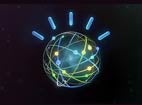If you were with me at the IBM Think Forum this week, you’d likely walk away with a strong “no” to this question. What makes IBM events very different from most vendor events is that much of the content is delivered by IBM customers, not IBM executives. After watching panel after panel of companies ranging from USAA to Kaiser Permanente talk about how this technology is critical to their future, you’d likely become a believer, like I already am. You see, I think decision engines, which are evolving into artificial intelligence (AI) driven machines, represent the biggest disruption in the computer market since the Internet. It is bigger than cloud and it could actually be bigger than the Internet. Heck, it might even be bigger than the invention of the wheel. I’m not kidding.
Let me explain.
Tools That Work and Tools That Work You
Most tools and weapons are designed to enhance what we can do, but force you to learn how to use them. They are force multipliers, but their optimum utility is a factor of how well you can learn the unique skills needed to make them work. Take something like a hammer, for example. It is simple to learn, but you still have to practice your aim and hitting straight for it to work properly. To use a pen, you have to learn what letters are and how to organize them into words and develop the coordination needed to write.
So while these tools increase speed, they are offset by the time it takes to learn them. Computers, in particular, fall into this training class, and it used to be far worse. Early computers required you to code in machine language manually. Then, you had to learn computer languages, and if you wanted to use a computer to create a document, you had to learn to program in a language like PROFS (I so hated that application) and code a document.
This has evolved, but you still have to learn to translate what you want done into commands that you write or give verbally in series, and the end result is often far from what you wanted or expected. This can be particularly annoying if we are calling into an automated telephone customer care system, as one example. Not only do these systems have trouble understanding what we are saying, they force us through a series of questions where we supply information that often should already be available to the system, and then force us to make decisions when they have the information we need to make good ones but we still don’t.
There likely should be formal training on how customers could use these systems more successfully, but customers wouldn’t take the classes and even if they did, the skills likely wouldn’t transfer well between systems. One of the biggest problems is that the person using one of these systems often doesn’t know what they want with enough detail to navigate through the annoying menus, or conversely, they know what they want and still have to navigate through a bunch of redundant steps.
Decision Engines: The End Game
What makes products like Watson different is that they are learning machines. As they evolve, they will be able to learn how to better interact with users, eventually eliminating the need for any special skills training.
Applying a Watson-like metaphor to the hammer example, you’d say you want to attack two things together. The system would understand what you needed done, would know the best way to do it, and then would find a way to get it done. The result would require little or no effort from you and be better than you could have possibly done yourself. Now, this result is more toward the end of the evolutionary curves for Watson, but that is the end game.
I indicated that this was near the end; the true end game would be a system that would anticipate your needs and automatically address them.
Watson: Where We Are
Watson and systems like this are more than a decade out from this end game. It won’t be until technologies like robotics are integrated before we get there. However, at this event, IBM is demonstrating that it has moved the ball significantly. It is now more like Siri on steroids and it can do some things automatically. Holding the systems back are the long training times needed and foolish practices like making policy decisions regarding the kind of information that is provided to the system. I perked up during this segment on systems with bad information because I’d written about it previously.
An entire session was devoted to the topic of how bad data is destroying the accuracy of analytics systems. Watson is an advanced analytics system. We have a shortage of data scientists who know how to train Watson and just a handful of folks who have the cross skills needed to ensure the end-user experience is optimized. In effect, we currently need people who both understand the process behind Watson and understand, intimately, what the end user actually needs.
Eventually, I expect this training will itself be passed to a learning system, but these are early days. That isn’t to say customers aren’t getting value; we had customer after customer at the forum testifying to the value they are getting in a broad cross-section of areas. This showcases just how bad current systems are in terms of understanding user needs and their near complete inability to address those needs.
Wrapping Up: The Smarter Future
We are still in the early days of systems like Watson. Implementations are showcasing incredible value because they provide user experiences far better than the systems that don’t have the capability to understand what users really want. I firmly believe the capability to learn what users want and to provide it in real time will differentiate the companies that are with us in 10 years and those that are not.
While Watson assures that IBM will be in the former group, this is a race that has just started. The end result is still more than a decade out, but avoiding this trend is no longer a viable strategy. Customers and users will prefer systems that understand them and if companies that provide services, like Amazon, Microsoft, or Google, figure this out first, that massive change in sales momentum toward them will make the PC and cloud revolutions look like a walk in the park by comparison. IBM is investing to lead the charge and its commitment is impressive, making them an excellent place to start.
Rob Enderle is President and Principal Analyst of the Enderle Group, a forward-looking emerging technology advisory firm. With over 30 years’ experience in emerging technologies, he has provided regional and global companies with guidance in how to better target customer needs; create new business opportunities; anticipate technology changes; select vendors and products; and present their products in the best possible light. Rob covers the technology industry broadly. Before founding the Enderle Group, Rob was the Senior Research Fellow for Forrester Research and the Giga Information Group, and held senior positions at IBM and ROLM. Follow Rob on Twitter @enderle, on Facebook and on Google+




